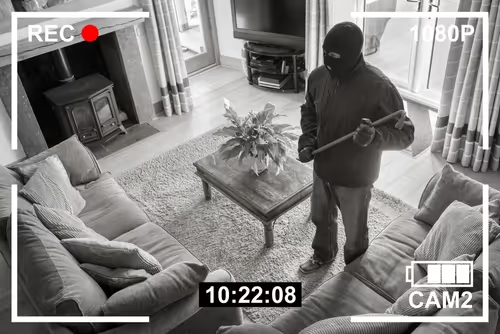Designed specifically to protect workers who may be doing their jobs in a challenging environment, personal duress alarms are a valuable part of any set of health & safety interventions. These personal safety alarm devices ensure that workers are protected in potentially hazardous situations, providing a critical safety net for those in high-risk jobs.
If your workforce includes employees that work remotely, visit the public, or frequently work unaccompanied in a people-facing role (such as a hospital, care home or detention centre), personal duress alarms could be a lifesaving security measure. These devices help ensure the personal safety of employees who may be exposed to danger.
What Are Duress Alarms?
A personal duress alarm is a device that's designed to protect an individual's personal safety, rather than property or possessions. A significant number of employees work in challenging environments where there is a risk to their safety. For example, solo workers completing tasks that are potentially hazardous (such as those involving electricity or underground maintenance tasks) are at a high risk of accidents, due to the nature of the work. Many workers are also at risk due to the people-facing nature of their job – employees completing community visits to vulnerable groups, for example, or those working with offenders, people with a mental illness, or people with complex care needs.
If the worker discovers they're in a hazardous situation, using a phone to call for backup, or removing themselves from the situation, may not be an option. In these circumstances, a personal safety alarm device is a great solution. The personal duress alarm is located somewhere on the individual. In an emergency, a simple activation operation (typically pressing a button) will wirelessly send a message that the worker is in distress and requires assistance. This enables help to be dispatched in a timely manner.
Types Of Duress Alarm
The most basic type of alarm is activated by pressing a button. This sends a signal that the worker requires assistance. The team in receipt of the alert can then respond in the most appropriate manner for the circumstances.
In addition to personal duress alarms that require activation, some personal safety alarm devices can be set to trigger if the wearer doesn't log in by a specific time. This type of alarm is particularly useful for workers who go from house to house to conduct their duties. These alarms incorporate a location tracker, allowing the support team to see where the individual is at all times. If they don't check in as per the protocol, an emergency response is generated.
Most personal duress alarms are designed to allow communication between the worker and the surveillance/support team. In most cases, there is a facility for the support team to page the worker, even if no alert has been activated. This enables the support team to proactively check in with workers if they haven't heard from them for a while or if they have any other concerns about their well-being.
Wearing a personal duress alarm makes a big difference to personal safety. These personal safety alarm devices also enhance worker well-being and enable workers in challenging posts to do their work, confident that backup is there if needed.
Whilst a personal duress alarm is not a substitute for other safety measures, including appropriate levels of staffing and risk assessment to minimise danger, it is a cost-effective security measure that can be used alongside other risk-reduction strategies to improve staff safety.
ASEC Group provides personal duress alarms suitable for a wide range of workers. If necessary, we will provide suitable training, so that wearers can use the device confidently.
Contact our team to find out more.




